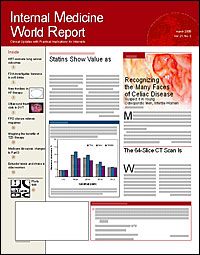Avian Flu H5N1: The Countdown Continues
Alarming Spread, Preparation Efforts, and Promising Vaccine Developments
Reports of the continued spread of avian flu H5N1 in European countries, such as France, Germany, Austria, Slovenia, Bulgaria, and Greece, as well as in Africa, have alarmed health authorities worldwide and promoted a call for more intensified action to stop its spread, along with continued educational efforts. On a more positive note, the highly anticipated H5N1 vaccine is showing promise and is expected to take only weeks to mass produce should the need arise, and a new laboratory test to detect human infections with avian influenza A/H5 (Asian lineage) viruses has been approved.
WHO Preparing for a Pandemic
The World Health Organization (WHO) recently released the "WHO Pandemic Influenza Draft Protocol for Rapid Response and Containment." This first draft, which is expected to evolve as needed, presents the WHO's strategic planning efforts, which can be put into action at the first signs of an avian pandemic.
According to the draft document, 2 principal strategies have been put into place for dealing with the existing avian influenza situation and decreasing the threat of a pandemic. The first focuses on reducing the chances that avian influenza will evolve into a pandemic by stopping the spread of H5N1 influenza to new countries, preventing high-risk behaviors, and strengthening awareness of the early warning system. The second involves amplifying each country's preparedness efforts by increasing access to antiviral drugs, developing pandemic vaccines that are more affordable, and creating communication plans and messages to improve adherence to suggested measures and to lessen social and economic disturbance.
The draft document includes a third strategy, which focuses on the coordination of international and national planning and resources in order to quickly identify and potentially stop or contain an emerging pandemic.
"Even if containment efforts ultimately fail to stop the emergence of a fully fit pandemic virus, these efforts could slow the initial spread?. Each day gained following the emergence of a pandemic virus?if rapidly detected?allows the production of around 5 million doses of pandemic vaccine," the report states.
Vaccine Developments
Using a purified protein from the surface of the virus called hemagglutinin to elicit an immune response to a specific strain of influenza, researchers have developed a viable method for mass producing an effective vaccine, according to manufacturer Protein Sciences. This strategy, known as FluBlok, produces the protein by first extracting the genes responsible for the production of hemagglutinin from the influenza virusand inserting theminto a baculovirus. Spe??cific host cells are then infected with the baculovirus and produce re?com?binant hemagglutinin (rHA). Phase 2 trials show that rHA-based vac?cines produced using this system are safe, elicit immunity that is equal to or greater than that of egg-based vaccines, and are 100% effective in preventing cell culture? confirmed influenza.
Development also continues on a vaccine produced by Sanofi Pasteur. The company has shipped 15,000 investigational doses of the vaccine to the National Institutes of Health (NIH). Prepared with different levels of antigen, the investigational doses will be used in NIH clinical studies to determine the optimal formulation of the vaccine. The investigational doses include an adjuvant, aluminum hydroxide, that could increase effectiveness and allow the use of less antigen in each dose.
Rapid Spread
With additional European Union nations confirming the presence of avian flu H5N1 in birds on an almost weekly basis, health experts are more convinced than ever that this virus is a global hazard. The addition of Nigeria, and more recently Niger, to the list of countries that have reported an outbreak among its bird population is particularly worrisome, according to officials.
"The confirmation of H5N1 avian influenza in Africa is a cause for great concern and demands immediate action," said WHO Director General Lee Jong-wook, MD. "This latest outbreak confirms that no county is immune to H5N1. Nigeria is one of several African countries located on the Black Sea?Mediterranean flyway used by migratory birds. Human and animal health services must be on high alert."
In response, a team of WHO experts are working in Nigeria to support the country's efforts to contain the avian influenza outbreak. The bird flu virus has so far been confirmed in poultry in the 3 northern states of Kaduna, Kano, and Plateau. "Nigeria is a densely populated country with a highly mobile population. Con?taining the outbreak in Nigeria?and elsewhere around the world where the disease has occurred?is crucial, as this will save the world community a public health nightmare," said the WHO's director for Africa, Luis Sambo, MD.
In 2006, a total of 31 human cases of avian influenza H5N1 have thus far been reported in 4 countries, and the disease has been responsible for 19 deaths by the end of February (Table). One hopeful sign is that no new human cases were reported in Cambodia, Thailand, or Viet Nam, where many human cases and deaths were reported in 2004 and 2005.
Detecting Avian Flu in Patients
Developed by the Centers for Disease Control and Prevention, a new laboratory test to diagnose H5 strains of influenza in patients suspected of being infected with the virus was approved by the FDA. Called the Influenza A/H5 Virus Real-time RT-PCR Primer and Probe Set, the test provides preliminary results on suspected H5 influenza samples within 4 hours. Previous technology re?quired at least 2 to 3 days to produce results. If the H5 strain is identified, further testing is conducted to determine the specific H5 subtype (eg, H5N1).
"This laboratory test is a major step forward in our ability to more quickly detect cases of H5 avian influenza and provides additional safeguards to protect public health," said Mike Leavitt, secretary of the Department of Health and Human Services.
The test will be distributed to Laboratory Response Network?designated laboratories to enhance early detection and surveillance activities.
